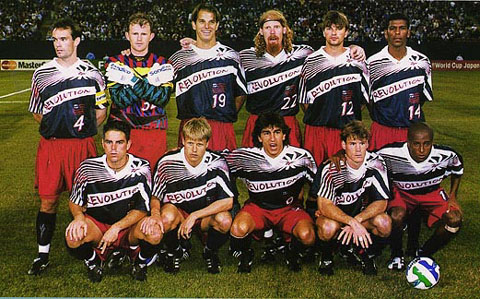With the players and owners in agreement and the 15th MLS season upon us, complacency is coming at soccer fans like an unskilled, college defender. Let us remember that we have not always had this level of soccer in the U.S., and it wasn’t easy getting here.
There were some extremely dark days.
The lights went out on March 28, 1985. The last NASL teams, Toronto and Minnesota, had watched Tampa Bay drop from the league and the Cosmos miss financial deadlines. The U.S. sent a couple guys to Europe, but most strong American players were in college, playing indoor or toiling through regional leagues.
Then came July 4, 1988. FIFA told the U.S. Soccer Federation that it could host the 1994 World Cup if the U.S. had a top level league in place by then. The world laughed. We hadn’t been to a World Cup since 1950. How could we host one?
The first concern was resolved with Paul Caligiuri’s Shot Heard Round the World. The second concern was answered by thousands of volunteers and Alan Rothenberg luring 3.6 million fans into football stadiums.
Few seemed to notice that the top level league wasn’t in place when Soldier Field hosted the World Cup’s opening game. The thinking went that we needed enthusiasm of holding the World Cup to create enthusiasm for a national professional league.
We soccer fans bought tickets and made reservations for big U.S. venues while suppressing our doubts that the sun would never shine on a new domestic league.
The U.S. earned a tie and a win, compliments of an own goal that yielded murder. Marcelo Balboa biked a shot just wide, catching billionaire Phil Anschutz’s attention. Tab Ramos took a vicious elbow to the head, and the U.S. fell to the eventual champion on July 4th.
The championship match was a bust, but beer-bellies from sea to shining sea asked, “Who knew that this World Cup would be such a big deal?” It’s still the most successful FIFA tournament ever.
Instead of starting right after the World Cup, Major League Soccer delayed its inauguration another year and set its sights on 1996. We held our breath and searched for a break in the clouds.
Anschutz and Lamar Hunt led the way with their checkbooks, and Major League Soccer created the single entity structure. No sensible investor wanted to replicate NASL’s cause of death or other sports’ cause of injury.
The league announced locations and team names: Wiz, Burn, Clash, Mutiny, and others. Three teams had names and players but no owners. Nevertheless, American soccer fans split into factions. We had stood side by side in 1994, but we separated in 1996, choosing teams like the Civil War had come again.
Light shone dimly.
MLS opened its curtains with ten teams, drawing soccer fans to San Jose for the first match. We got concerned when it went on 0-0. A little better than scoreless, San Jose took the slimmest lead when Eric Wynalda netted the first ever MLS goal.
With help from the shoot-out, L.A. ran off 12 straight wins and sent Hollywood’s Andrew Shue on a media tour.
The first MLS Cup kicked off in Boston and climaxed in a puddle. We stomped on the bleachers to applaud, too cold to remove our hands from under the ponchos. Eddie Pope claimed the winner and D.C. United claimed the first leg of its dynasty.
The next day the Boston Globe proclaimed “A shiny day in any weather.”
Jamie Clary is the author of The First American Soccer Trivia Book which can be purchased here. He can be reached via Twitter at @soccerprofessor.
